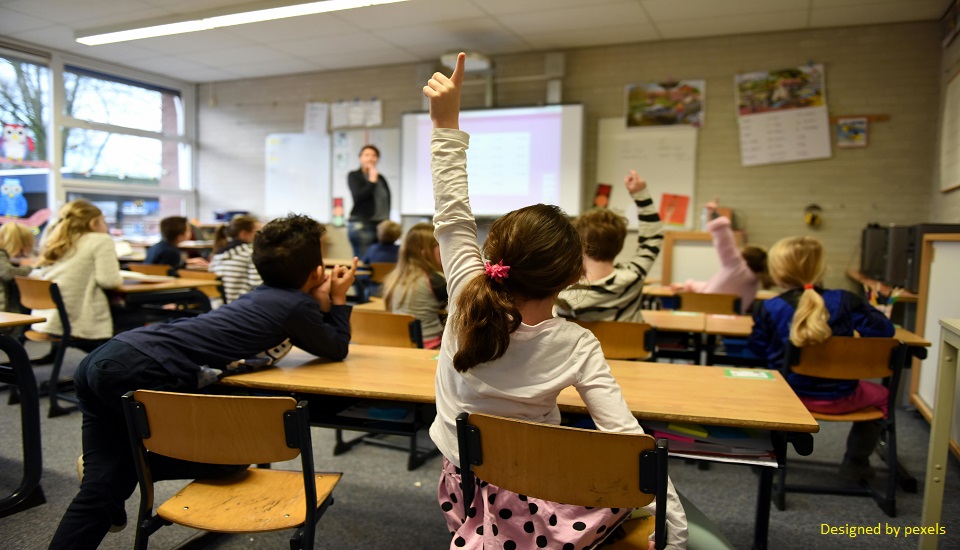Why Design Thinking is the Key to Inclusive Learning in 2025
21st March 2025

Every day, countless students sit in classrooms where they feel lost, overlooked, or misunderstood. The painful truth? Traditional education often leaves behind those who think, learn, and process information differently.
Many schools claim to value inclusivity, yet their teaching methods remain rigid and one-dimensional. Students with diverse learning needs frequently end up disengaged, frustrated, or struggling silently while appearing to keep up.
The good news? Design Thinking in education offers a revolutionary solution. Instead of asking how students can adapt to existing systems, this approach flips the script and asks:
What is the best way for every student to learn?
What is Design Thinking?
Design Thinking is a powerful problem-solving method that puts real human needs at its center. It combines empathy, creativity, and ongoing improvement to create effective solutions.
While it began in business and product design, Design Thinking has found its way into education, transforming how schools approach learning. Unlike traditional top-down teaching methods, this approach embraces flexibility and adaptation.
Teachers who use Design Thinking can test, refine, and adjust their strategies until they work for all students- not just those who fit the conventional mold.
The Five Stages of Design Thinking for Inclusivity
Design Thinking isn't just a theory. It is a practical framework that educators can apply immediately.
The process follows five distinct stages that build upon each other, creating a cycle of continuous improvement rather than a one-time fix.
1. Empathize: Understanding the Learner's Reality
The journey begins with gaining deep insight into students' experiences- beyond academic performance to their emotional, sensory, and social challenges. Every student processes information differently, making empathy the cornerstone of true inclusivity.
As an educator, how can you develop empathy?
- Observe student behaviors. Note down the struggles and moments of engagement.
- Hold open discussions. Ask students directly about their learning preferences.
- Try assistive technology and experience learning from different perspectives.
If you notice neuro-divergent students struggling with sensory overload, create calm zones with adjustable lighting. The result? Improved focus for all students, not just those with specific sensory needs.
2. Define: Pinpointing the Real Issues
With insights gathered, you must frame problems precisely. Vague observations lead nowhere. Be specific because clearly defined challenges lead to effective solutions. Enroling in special education courses can help you understand your students better and combat this issue.
While defining a problem, do not say 'Students with ADHD struggle in class.' as it sounds too broad. Instead say 'Students with ADHD lose focus during long, unstructured lectures without breaks or varied activities.'
For instance, when you specifically identify reading difficulties among dyslexic students, try using reading apps with color-coded text, making content more accessible for everyone.
3. Ideate: Creating Flexible Solutions
This stage involves brainstorming creative approaches rather than forcing students to adapt to inflexible teaching methods.
Effective ideation strategies include:
- Develop multi-sensory lessons that engage visual, auditory, and hands-on learners.
- Create interactive content with multiple engagement options.
- Reimagine assessments beyond written tests- offering presentations, visual projects, and digital options.
For instance, your school can introduce voice-to-text tools as an alternative to handwriting, helping dysgraphic students and those with test anxiety.
4. Prototype: Testing Small Solutions First
Rather than exercising massive changes immediately, Design Thinking encourages small-scale experiments that can be refined before wider adoption.
How can you prototype inclusivity?
- Test alternative formats like digital notes and audio lessons.
- Create flexible environments with varied seating and workspace options.
- Let students experiment with different learning approaches.
Using text-to-speech tools for visually impaired students can also help struggling readers improve comprehension.
5. Test: Refining What Works
No solution arrives perfectly. The final stage involves gathering feedback and fine-tuning approaches.
How to test and improve?
- Collect student input on what worked and what did not.
- Track engagement metrics to measure effectiveness.
- Continuously adjust approaches that show promise.
Research shows that schools using adaptive learning software found some students preferred voice-based tools over text-heavy options, prompting further customization.
Key Milestones in the Design Thinking Journey
While the five-stage process provides the framework, successful implementation depends on reaching critical milestones along the way.
Here are three essential milestones that mark real progress in the Design Thinking journey:
6. Looking Closely: Seeing What Others Miss
True inclusivity begins with noticing struggles that often remain hidden. Not all learning challenges are immediately visible.
Techniques for deeper observation:
- Monitor participation patterns across different types of activities.
- Ask targeted questions about learning preferences and challenges.
- Assess environmental factors like lighting, noise, and seating arrangements.
7. Embracing Complexity: Multiple Paths to Success
Every student has unique needs- one approach will never work for all. Inclusive education requires multiple pathways to achievement.
Strategies for embracing diversity:
- Mix learning modalities (visual, written, verbal, hands-on).
- Offer choices in how students demonstrate knowledge.
- View learning differences as strengths to leverage, not problems to fix.
8. Finding Opportunity: Scaling What Works
After identifying effective approaches, the challenge comes to refining and expanding them for maximum impact.
Scaling successful strategies include:
- Apply student feedback to improve learning models.
- Use performance data to guide adjustments.
- Extend helpful approaches to benefit all students.
Bottom Line
Education should never force students to conform to outdated systems. The future lies in designing learning experiences that celebrate and accommodate human diversity in all its forms. Educators who pursue special education teacher courses know better- how to create spaces where every student feels valued, capable, and engaged. It's time to stop fixing students and start fixing your approach to education instead.
We believe education should be accessible to everyone. That’s why we don’t charge for our blogs. Find the right course that will help you in your career with us, contact us at 1800–212–6400. You can mail us at act@asiancollegeofteachers.com.








